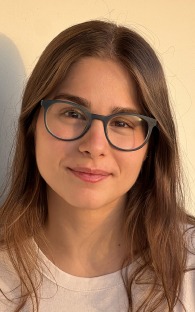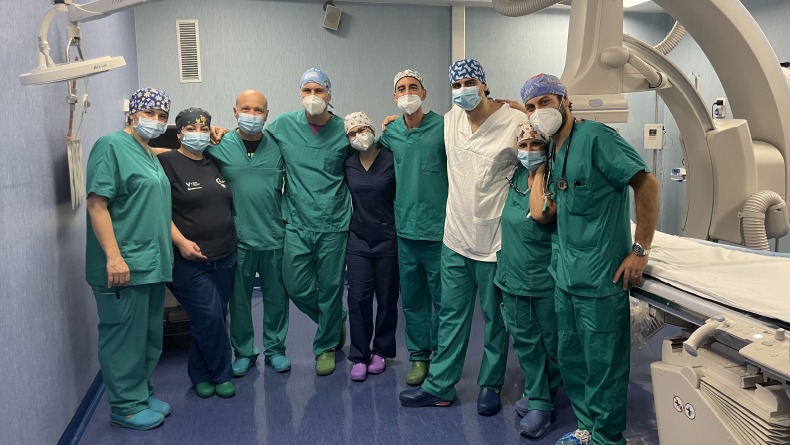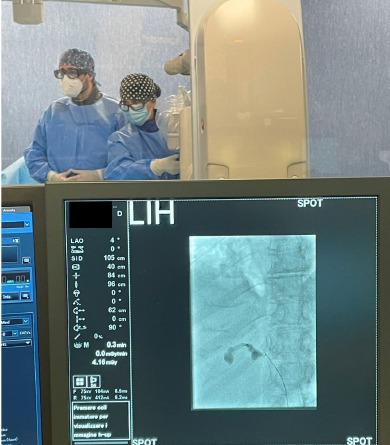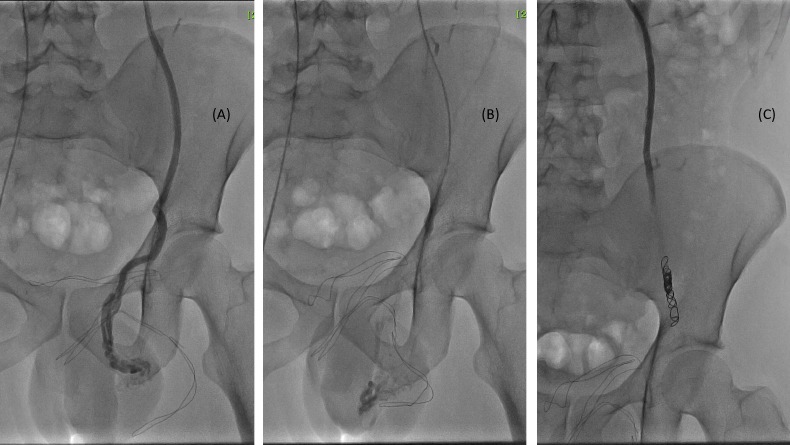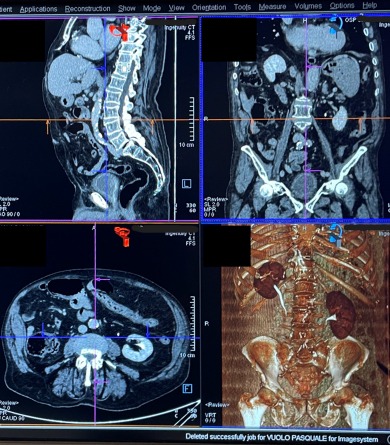Student internships: Anna Detoraki
Anna Detoraki, a 4th year medical student from the European University of Cyprus, wrote to us to share more about her experiences completing an internship at the Cardarelli Hospital in Napels, Italy.
At the start of my third year of medical school, I found out from a classmate that CIRSE was offering medical students the chance to match with Interventional Radiology Departments all over Europe in order to experience firsthand what interventional Radiology (IR) is in clinical practice. After reading more about the process, I jumped at the opportunity and reached out to get connected. Soon after I sent all necessary documents, I was matched with the Vascular and Interventional Radiology Department at the Cardarelli Hospital in Naples. As a medical student who had just finished my third year and had not yet had a radiology rotation in a university setting, I was initially nervous about the internship, but it proved to be one of the most inspirational experiences I have had in medicine so far.
When I first arrived at the department, the first procedure that was scheduled was the treatment of varicocele via embolization. This is one of the by far most common therapeutic procedures being carried out and, as my introduction to the world of IR, it peaked my interest and made me eager to learn even more about all the methods interventional radiologists use to provide treatments to patients and provide immediate, tangible results.
A routine procedure that was also scheduled often was treatment of biliary drainage. Regarding the biliary drainage procedures, apart from the technical aspect of the procedure, I got to see and understand the important role Interventional Radiology plays in palliative care in hepatocellular cancer patients, which was an aspect of IR I had not considered before witnessing the immediate relief it provided.
Another of the most common procedures being performed was biopsies via guidance of ultrasound and angiography. I had the opportunity to watch this type of diagnostic procedure a lot, and the case-to-case variability helped me understand what the most important characteristics of each case were and what should be taken into account when performing one.
I had the opportunity to witness a lot of vascular procedures, since placements of vascular stents and transarterial chemoembolization were also happening often. While not as common, I also had the chance to see percutaneous angioplasties, and a Transjugular Intrahepatic Portosystemic Shunt (TIPS) procedure, which I found fascinating.
A benefit of being matched with this specific department was that I got to see some interesting emergency procedures, such as management of bleeding due to ectopic pregnancy. The emergency aspect of IR and the interventions for acute, life-threatening conditions were definitely one of the most influential and inspirational of the internship experience.
The mesh of all the radiological imaging methods that needed to be taken into account while and/or prior to each procedure fascinated me, with ultrasound and CT scans playing key role in planning how each procedure would be carried out.
Before I watched that first varicocele on my first day, Dr. Giurazza, who was performing it, took the time to explain to me step by step what I would see on the monitor as he carried out out the patient’s angiography. He continued to then explain what materials he would be using and why, and what he would be on the lookout for. By the time he started the treatment, I had a good idea of what was happening, and I was able to identify the steps that were described to me in the angiography on the monitor. After the procedure was over, he patiently answered my questions and further elaborated on what happened and the decisions he made during it. Over the course of my stay I got to see the same kind of procedure being carried out in different ways, whether it was a varicocele, a biliary drainage or biopsy. Every time, my questions were answered and the different decisions being taken, from the choice of materials to the extent of intervention, were explained to me clearly and eagerly.
This pattern of patient, enthusiastic and to-the-point explaining of the ins-and-outs of operating in an IR Department remained throughout my stay, maintained not only by Dr. Giurazza, but every doctor that interacted with me. Dr. Borzelli, who invested a lot of time talking to me and providing me with insights, Dr. D’ Antuono and Dr. Corvino, as well as Dr. Niola, were all incredibly helpful and eager to share their knowledge and love for IR with me. They painted a beautiful picture of how IR skillfully, efficiently and swiftly can provide input on a patient’s treatment, care, as well as diagnosis. For their teaching and guidance, I am incredibly thankful.
Overall, this internship was an experience that not only showed me how IR procedures are carried out, but also how an IR department operates, and gave me the opportunity to meet incredible, passionate teachers that inspired me and gave me tools that I can later utilize to be a better doctor. I would strongly encourage any medical student, even if their knowledge in radiology is introductory, to reach out and arrange for an internship themselves; it is an experience that they would not want to miss out on.

